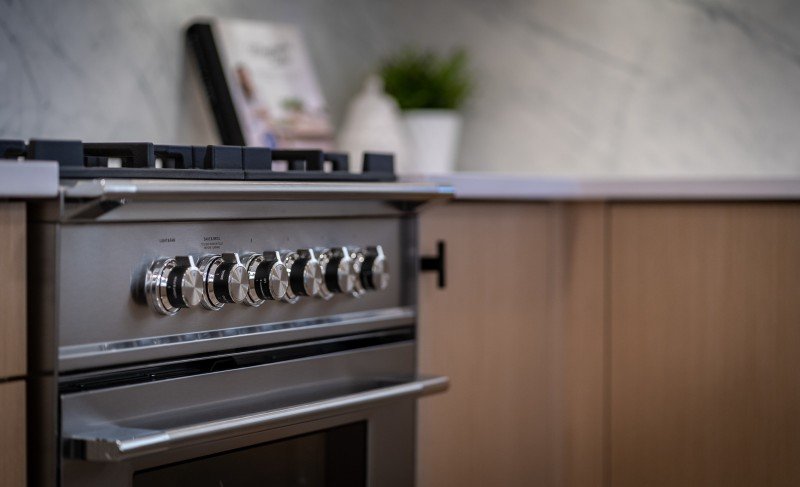integratedovens5476
About integratedovens5476
This Is The History Of Builtin Oven

The Comprehensive Guide to Built-In Ovens: Features, Benefits, and FAQs
Built-in ovens are a popular choice for contemporary kitchens, providing adaptability, effectiveness, and a smooth style that incorporates seamlessly into cabinets. This short article will dive into the different aspects of built-in ovens, including their features, advantages, setup options, upkeep pointers, and responses to frequently asked questions.
What is a Built-In Oven?
A built-in oven is created to be set up within kitchen cabinets and is readily available in different setups, such as single or double ovens. Unlike freestanding ovens, built-in models supply a structured appearance and offer more versatility in kitchen style. They can be found in electric, gas, and steam choices, accommodating a series of cooking choices.

Functions of Built-In Ovens
Built-in ovens are packed with functions that improve cooking experiences. Here are a few of the most common functions to consider:
| Feature | Description |
|---|---|
| Self-Cleaning | Lots of models include a self-cleaning function that burns off residue at heats, streamlining upkeep. |
| Convection Cooking | This function utilizes a fan to distribute hot air, cooking food more uniformly and quickly. |
| Smart Technology | Some ovens come equipped with Wi-Fi connectivity, enabling users to manage the oven remotely through smartphone. |
| Numerous Cooking Modes | Include alternatives such as baking, broiling, roasting, and air frying, providing flexibility for various dishes. |
| Temperature Probe | Keeps an eye on the internal temperature of food, guaranteeing completely cooked meals each time. |
| Sleek Design Options | Readily available in numerous surfaces (stainless steel, black, white) to match kitchen decoration. |
Benefits of Built-In Ovens
The installation of a built-in oven brings various advantages to any kitchen:
- Space Efficiency: Built-in ovens maximize kitchen area, offering a tidy and orderly look without sacrificing performance.
- Enhanced Cooking Performance: With innovative features like convection cooking and precise temperature controls, built-in ovens typically exceed conventional designs.
- Design Flexibility: These ovens can be set up at eye level, enabling simple gain access to without flexing down, which can be particularly helpful for people with physical limitations.
- Enhanced Resale Value: A properly designed kitchen with premium built-in appliances might interest potential purchasers, boosting general property value.
- Modification Options: Many brands offer adjustable designs that fit the particular measurements and visual of specific cooking areas.
Setup Options
When choosing a built-in oven, comprehending the installation alternatives is important. Here are the most typical setups:
-
Single Built-In Oven: Ideal for smaller cooking areas, these systems provide adequate space to cook a variety of meals concurrently, best for everyday cooking.
-
Double Built-In Oven: Best suited for passionate cooks and large families, double ovens allow for simultaneous cooking at two different temperatures, ideal for meals that require different cooking techniques.
-
Combination Steam and Oven: A hybrid solution that combines the advantages of traditional baking with steam cooking. This alternative is exceptional for maintaining moisture in foods, making it ideal for baking bread or roasting meats.
Upkeep Tips for Built-In Ovens
Preserving a built in electric oven and hob (www.gpshow.Com.Br)-in oven is important for its longevity and optimum efficiency. Here are some practical maintenance tips:
-
Regular Cleaning: Use the self-cleaning feature when necessary, and wipe down the outside and interior surfaces regularly to prevent grease buildup.
-
Check the Seals: Inspect the oven door seals for any wear or damage to ensure proper insulation and cooking performance.
-
Temperature level Calibration: Occasionally evaluate the temperature accuracy using an oven thermometer, particularly if cooking times seem longer than normal.
-
Ventilation: Ensure adequate ventilation around the oven to prevent getting too hot, specifically for built-in designs that might be surrounded by kitchen cabinetry.
Frequently Asked Questions About Built-In Ovens
1. Are built-in ovens more pricey than freestanding designs?Yes, built-in ovens tend to be more pricey due to their design, installation requirements, and extra functions. However, their advantages can validate the cost in the long run.
2. Can you set up a built-in oven yourself?While some useful people might attempt to set up a built-in oven, it is suggested to hire an expert to make sure appropriate installation, ventilation, and security standards.
3. What is the average life-span of a built-in oven?The normal life expectancy of a built-in oven is around 10 to 15 years, depending on use and upkeep. Regular care can help extend its durability.
4. Are built-in ovens energy efficient?Many modern built-in ovens are created with energy effectiveness in mind, including functions like insulation and accurate temperature level controls that might decrease energy consumption compared to older models.
5. Can a built-in oven be fixed if it breaks?Yes, built-in ovens can typically be fixed. It is recommended to call a certified service technician for medical diagnoses and repairs to ensure safety and compliance with guarantee arrangements.
Built-in ovens are an exceptional addition to any modern-day kitchen, supplying a combination of design, performance, and advanced cooking features. With the right knowledge about their functions, advantages, and maintenance, property owners can make educated choices to enhance their cooking experiences. As kitchen style trends continue to develop, the built-in oven stays a staple for those seeking to mix looks with effectiveness in their cooking spaces.
No listing found.
